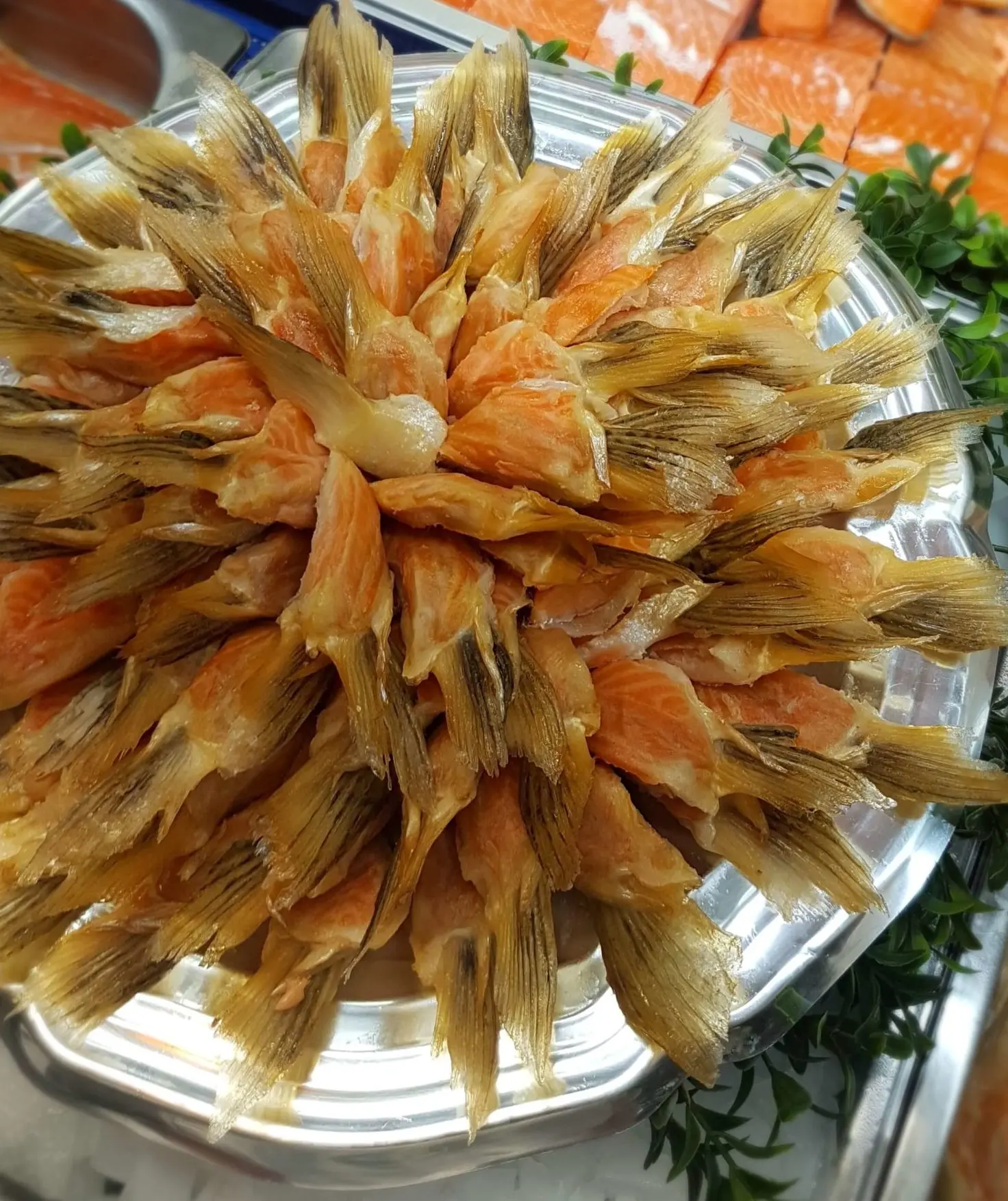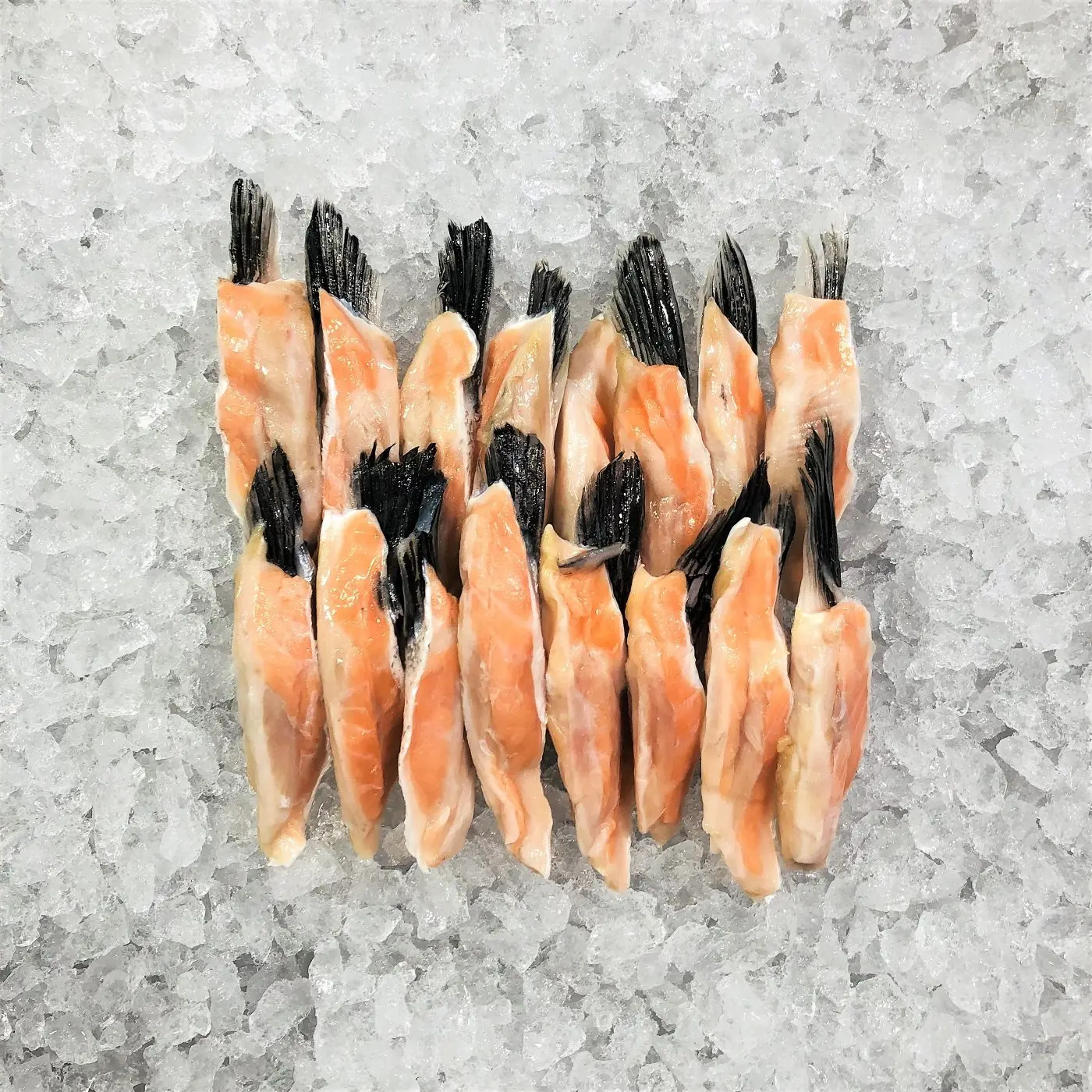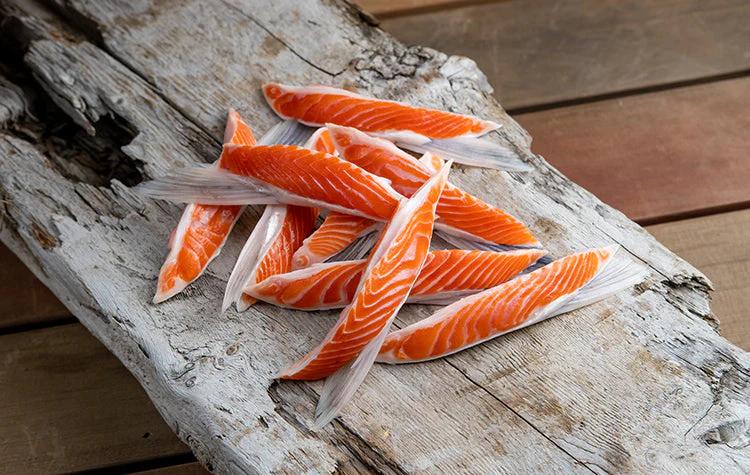Smoked salmon fins are a unique and often overlooked part of the fish that holds a wealth of interesting information. In this article, we will explore the various aspects of salmon fins, their functions, and what they are made of. Let's dive in!
Can You Eat Salmon Fins?
One common question that arises is whether salmon fins are edible. The answer is yes, you can eat salmon fins. In fact, they are considered a delicacy in some cuisines. Smoked salmon fins, in particular, are highly sought after for their unique taste and texture. They can be enjoyed on their own or used as an ingredient in various dishes.

Are Salmon Fins Good?
Salmon fins are not only edible but also highly nutritious. They are rich in omega-3 fatty acids, which are known for their numerous health benefits. Omega-3 fatty acids are essential for brain function, heart health, and reducing inflammation in the body. Additionally, salmon fins are a good source of protein and contain vitamins and minerals that contribute to overall well-being.
What Are Salmon Fins For?
Salmon fins serve several important functions for the fish. Let's take a closer look at each fin and its role:
Caudal or Tail Fin:
The caudal fin is the largest and most powerful fin of the salmon. It propels the fish forward in a wavy path by pushing from side to side. This fin is crucial for the fish's locomotion and allows it to navigate through water with ease.

Dorsal Fin:
The dorsal fin acts as a keel on a ship, helping to keep the fish upright and controlling its direction of movement. It provides stability and balance to the salmon.
Anal Fin:
The anal fin also aids in maintaining the fish's stability and upright position. It works in conjunction with the dorsal fin to ensure smooth movement through the water.
Pectoral and Pelvic Fins:
The pectoral and pelvic fins are fused and primarily used for steering and balance. They enable the salmon to maneuver and change direction while swimming. These fins also allow the fish to move up and down in the water column.
Adipose Fin:
The adipose fin, found on the back of the fish just ahead of the tail, has no known function. In some cases, it may be clipped off in hatchery fish for identification purposes when they return or are caught.

What Are Salmon Fins Made Of?
Salmon fins are composed of a fan of bone-like spines with a thin skin stretched between them. Unlike human limbs, the fins are embedded in the salmon's muscle and are not linked to other bones. This unique structure provides the fish with flexibility and maneuverability, allowing it to navigate through water effortlessly.
Salmon fins are covered in a layer of slime, which serves multiple purposes. The slime helps the fish slip away from predators, glide over rocks to avoid injuries, and move smoothly through water when swimming. It also acts as a protective barrier against fungi, parasites, disease, and pollutants in the water.
Scales and Other Interesting Features
In addition to fins, salmon possess other fascinating features worth mentioning:
Scales:
Salmon, like most fish, have scales covering their skin. These small, hard plates provide protection against predators and bruising. The scales overlap, forming a flexible armor plating. Biologists can determine the age of a fish and its migration patterns by studying the growth lines on its scales.
Inner Ear and Lateral Line:
Salmon have an inner ear but no outer ear. Sound waves travel through the water and their body to the bones in the inner ear, helping them detect predators and other threats. Salmon also rely on their lateral line, a series of liquid-filled canals along the side of their body, to detect vibrations, pressure waves, and disturbances in the water. This sensory system aids in navigation and survival.
Nostrils and Smell:
Salmon have nostrils above their mouth, which they use to detect chemicals in the water. They can recognize smells to navigate their way home from the ocean and avoid potential threats. The sense of smell plays a crucial role in their survival and reproductive behavior.
Mouth and Operculum:
Salmon have sharp teeth and a tongue with two sharp shafts that they use to grab their prey. Their mouth also contains taste buds, allowing them to perceive salt, sweet, bitter, and acidic flavors. The operculum, a hard outer lining, protects the gills and regulates the flow of water over them.

Smoked salmon fins are not only a delicious delicacy but also a fascinating aspect of the fish's anatomy. Their various functions and unique composition showcase the remarkable adaptations of salmon to their aquatic environment. Next time you enjoy smoked salmon, take a moment to appreciate the fins that contribute to its flavorful experience.
If you want to know other articles similar to The fascinating world of smoked salmon fins: exploring functions and composition you can visit the Fish anatomy category.

